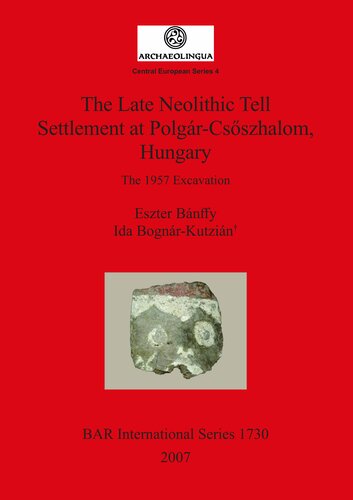

Most ebook files are in PDF format, so you can easily read them using various software such as Foxit Reader or directly on the Google Chrome browser.
Some ebook files are released by publishers in other formats such as .awz, .mobi, .epub, .fb2, etc. You may need to install specific software to read these formats on mobile/PC, such as Calibre.
Please read the tutorial at this link: https://ebookbell.com/faq
We offer FREE conversion to the popular formats you request; however, this may take some time. Therefore, right after payment, please email us, and we will try to provide the service as quickly as possible.
For some exceptional file formats or broken links (if any), please refrain from opening any disputes. Instead, email us first, and we will try to assist within a maximum of 6 hours.
EbookBell Team

4.8
14 reviewsIn 1957, preliminary investigations revealed a major Late Neolithic settlement mound, which also happened to be the northernmost tell settlement on the Great Hungarian Plain. Although the trial was limited to a small trench, the several meters thick deposits yielded exciting finds and several richly furnished burials. The brief preliminary report and the various references to the excavation made it quite obvious that the tell was one of the key sites of the Hungarian Neolithic and thus the full publication of the tell and its finds was, quite understandably, eagerly awaited by prehistorians. The site's investigation was resumed in 1989 as part of the excavations preceding the construction of the M3 motorway. The excavator directed the large-scale excavation of the tell and its enclosure of five ditches, and of the extensive horizontal settlement beside it. This excavation was preceded by various geophysical surveys and palaeoenvironmental sampling in order to reconstruct the settlement's one-time environment and to determine the exact date of its occupation. However, until the results of the new excavation are published in detail, this monograph will be the single available study on the Polgár–Csõszhalom site, the eponymous site of a Late Neolithic culture.